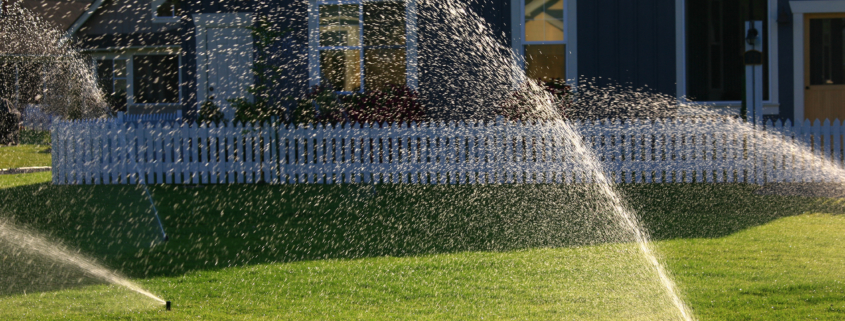Irrigation Is Supplemental Water:
What Happens When We Experience a Drought?
Your forecast: temps in the 90s, low humidity, and not a cloud in the brilliant sunny sky. Looks like a perfect day for the beach or for sipping ice cold lemonade on your deck. But as great as this weather sounds (especially after a long winter), sustained conditions like this lead to and intensify drought.
It’s no surprise that we are experiencing a moderate drought here in Central Indiana. In a typical June, for example, we see about 4.7 inches of rain. Just 1.18 inches fell in June 2022. It’s the driest the state has been since 2012, when most of Indiana experienced severe drought.
But back to 2022: What do drought conditions mean for your lawns, gardens, outdoor spaces – and your irrigation system?
Our Plants Are Stressed Out
Plants have surprisingly sophisticated techniques that they use to survive during periods when rainfall is scarce. For example, they typically absorb water through their roots and send back vapor into the air. When it’s abnormally dry, they decrease the amount of vapor they release to help retain water.
But over time, your lawn will turn brown, your leaves will start to yellow, you will see some wilting, and your harvest of tomatoes, cuckes, squash, or even your prize-winning roses will not be as abundant or as healthy as usual. When we hit the moderate drought stage, your grass and other plants will become more stressed. In short: they’re thirsty… very, very thirsty.
Irrigation Is Supplemental Water
Our irrigation systems are intended to act as a supplement to the rainfall that Mother Nature provides us. They are not meant to supply all the water necessary for healthy, thriving lawns. Periodically, we experience extended weeks with little to no rainfall, just as we are currently. When this happens – combined with 90℉+ temperatures and low levels of humidity – it can be difficult for irrigation systems to keep up with the demand our grass need to stay lush and green.
High temperatures pose their own challenges for our grass as well. The majority of Indiana laws are sown with cool season grasses (e.g. Bluegrass, Tall Fescue, Rye), the ideal temperature for which is 65-75℉.
When the mercury climbs well over 90℉, and we have minimal rainfall, it causes the turf to go dormant. This is one of the survival adaptations we talked about earlier; it essentially goes into a hibernation period.
If you are seeing your grass turn yellow or brown, do not be alarmed. This will likely happen even if you are irrigating regularly. The turf will go dormant but it will come back as temperatures cool and rainfall increases.
In conditions such as those we are experiencing now, we recommend irrigating lightly (about ½ inch) every three to four weeks. It is important to recognize that this won’t turn a yellow or brown lawn into a lush green oasis. Rather, the goal is to keep grass alive until the weather decides to cooperate.
Keeping Your Lawn Healthy in Abnormally Dry and Drought Conditions
Remember, irrigation is supplemental water, not a replacement for rainfall. Overwatering can be just as detrimental to a lawn, not to mention a waste of this precious resource. What can you do to ensure your lawn stays alive if not thrives in a drought?
- Prepare. Before drought sets in, irrigate your lawn infrequently but at a deeper level. This will allow the grass to grow deeper roots, which will help it survive.
- Skip the Daily Drink. For the love of green, do not water your lawn daily. Most of it just evaporates, and it “trains” your grass to expect that big sip each day. Watering less (and not in the midday sun!) encourages it to develop deeper roots.
- Irrigate Infrequently. As mentioned, irrigate lightly every three to four weeks to help your lawn during the dormancy period.
- Lay Off the Lawn. Now is the time to minimize or eliminate foot traffic, which can weaken your lawn.
- Rethink Your Landscaping. Choosing drought resistant plants and integrating more hardscape features can help your lawn and outdoor space conserve water and stay more vibrant during dry periods. Our team is happy to recommend and install hardy species and hardscaping features that enhance the beauty of your property.
Check out our 10 tips to beat the heat and keep your lawn green and healthy.
Stay Green with GreenImage
In moderate drought conditions, it may not be feasible to maintain a completely green lawn. However, there are plenty of steps we can take to ensure it stays healthy and wakes up from a dormant period refreshed and ready to wow.
Contact GreenImage to discuss your needs.
What Happens When We Experience a Drought?



